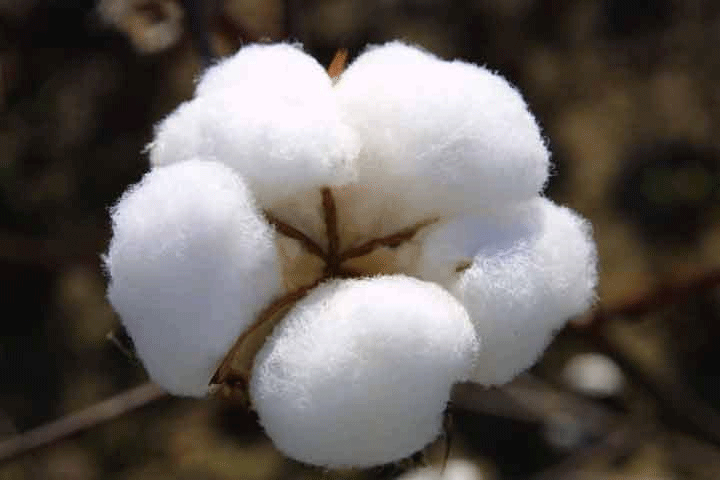By Iftikhar Ahmad
MULTAN, Jul 23 (APP): Clothing holds the significance of being the second most important component of life after food. Owing to its global relevance, cotton production countries thus enjoy special privileges worldwide – cotton export being their major source of income generation.
The cotton sector, therefore, is going through more advancement globally with more research providing ways to enhance yields.
Agriculture scientists are trying to develop numerous cotton varieties in Pakistan too since the day Quaid-e-Azam Muhammad Ali Jinnah laid the foundation of the Pakistan Central Cotton Committee (PCCC) back in 1948.
“Several cotton research institutions started working under the umbrella of PCCC and delivered 59 cotton varieties including 36 credited to Central Cotton Research Institute (CCRI) Multan alone,” says Sajid Mahmood, the technology transfer head of CCRI Multan, adding developing a traditional cotton variety takes almost 8-10 years.
Moreover, 72 varieties were developed by Cotton Research Institute (CRI) Multan which was working under the provincial government and operational well before the partition, said retired Director Cotton Punjab Dr. Sagheer Ahmad, nowadays heading Tara CropSciences’ Research and Development wing as chief scientist.
There are other prestigious research institutions like the Nuclear Institute of Agriculture Tandojam, National Institute of Biotechnology and Genetic Engineering (Nibge), Nuclear Institute for Agriculture and Biology (NIAB), Faisalabad, Centre of Excellence in Molecular Biology (CEMB) Punjab University Lahore.
A cotton saga in Pakistan remained greatly marred by pest attacks, poor management by small farmers owing to lack of knowledge or resources or both, fake fertilizers, pesticides, and sometimes due to climate change phenomenon.
“There are 150 reported cotton enemy pests in Pakistan, highest than any other cotton-producing country in the world,” said Sajid Mahmood.
“Traditional cotton varieties did wonders and there were occasions when Pakistan touched 14 million bales mark or remained just below, thanks to CCRI Multan variety CIM-496, Niab-78 by Nuclear Institute of Agriculture and Biology (NIAB), Faisalabad, MNH-93 and S-12 by CRI Multan and some others,” said Khawaja Shoaib, who added that Pakistan had the potential of producing at 18-20 million bales if the crop was managed properly.
In 1948-49, Pakistan’s lint per hectare (KG/HA) production was over 700 kilograms, higher than India, the largest cotton producer in the world of cotton.
According to statistics of last decade from 2009 to 2022, the country’s kg/ha was 707kg in 2009 and it gained 12.914 million bales production from 3.106 million hectares. It rose to 724kg per hectare in 2010 but production reduced to 11.4 million owing to area reduced to 2.689 million hectares.
However, come 2011-12, lint production blinked at 815 kilograms per hectare and production of 13.595 million bales from 2.835 million hectares strengthened the economy. During the next two years lint kg/ha was recorded at 769 and 773 kilograms and production remained above 13 million bales in 2012-13 and 12.769 million bales in 2013-14.
However, 2014-15 was a remarkable year when Pakistan again crossed 800-kilogram lint production per hectare and registered a record 13.983 million bales. In 2015, 2016 and 2017, the production declined to 10.074, 10.671 and 11.93 million bales respectively. Cotton area started decreasing in 2018-19 when it was 2.373 million hectares and the country gained 9.861 million bales at the rate of 707-kilogram lint per hectare.
In the next three years, production remained between 7 to 8 plus million bales. In 2021-22, cotton area was reduced to 1.937 million hectares only, however, a good 731-kilogram lint per hectare figure yielded a heart-consoling production of 8.328 million bales. However, the major shock came in 2022 when torrential rains triggered by climate change swept away standing crops across the cotton belt in Sindh and Punjab and though the area of 2.144 million hectares was slightly higher than last year, Pakistan ended up gaining only 4.9 million bales, the lowest in history with lint per hectares also reduced to country’s lowest, 472 kilograms.
When asked to comment on the cotton story over the years, Dr. Sagheer said, researchers had been doing a great job with the resources available to them.
While research on traditional varieties is still on, Pakistan has also experimented with hybrid varieties but the higher cost of production appeared discouraging. Then came Bt cotton varieties with resistance genetically incorporated against insect pests in seeds and Pakistan officially allowed its research and cultivation in 2012.
Pakistan recently witnessed an indigenous feat, thanks to scientists from the Centre of Excellence in Molecular Biology (CEMB) when they developed Transgenic Cotton, a triple gene that would turn local cotton varieties into triple gene varieties once the gene is injected and many public and private research institutions and seed companies have incorporated the gene in their own varieties undergoing field trials, a mandatory provision before it is available for commercial cultivation.
These varieties are trumpeted to have resistance against insect pests, high yielding, climate-smart and Glyphosate tolerant, something that addresses the weeds problem.
“Being one of the ancient homes of cotton and the fifth largest cotton producer of the world after India, China, USA and Brazil, Pakistan needs to invest big in cotton research,” says Dr. Tasawwur Hussain Malik, Director Research Pakistan Central Cotton Committee (PCCC).
APTMA leaders believe that when other countries of world cotton club can reach 1000-2000 kilogram lint per hectare, why cannot Pakistan?
According to a World Bank report, China has a lint per hectare production of 2027 kilogram, USA 943 kg/ha, Australia 1973 kg/ha, and Turkey 1793 kg/ha.
Dr. Muhammad Ali Talpur, the economic advisor to the Ministry of Planning and Development, when contacted, said, when Bt cotton was relatively a new phenomenon, some international seed firms had approached Pakistan around two decades back but they wanted Royalty on their Bt seed and demanded penalties on farmers under a regulatory system on sowing of their varieties sans Royalty payment.
Things did not work out then, however, recently, a proposal was discussed at a higher government level to introduce a regulatory system and a US$75 million fund be created to make penalty payments to international research companies in case of Royalty violation, Dr. Talpur said.
Officials believe that the recent Green Pakistan initiative by Prime Minister Shahbaz Sharif launching Special Investment Facilitation Council (SIFC) and envisioned to attract US$30-50 billion investment in the next few years was a step in the right direction and would bring vast tracts of land under cultivation of cash crops including cotton.





